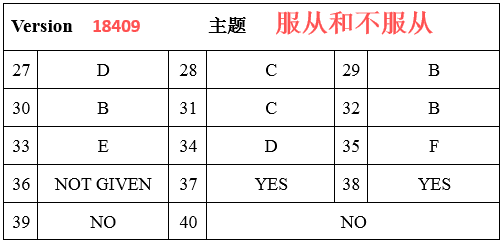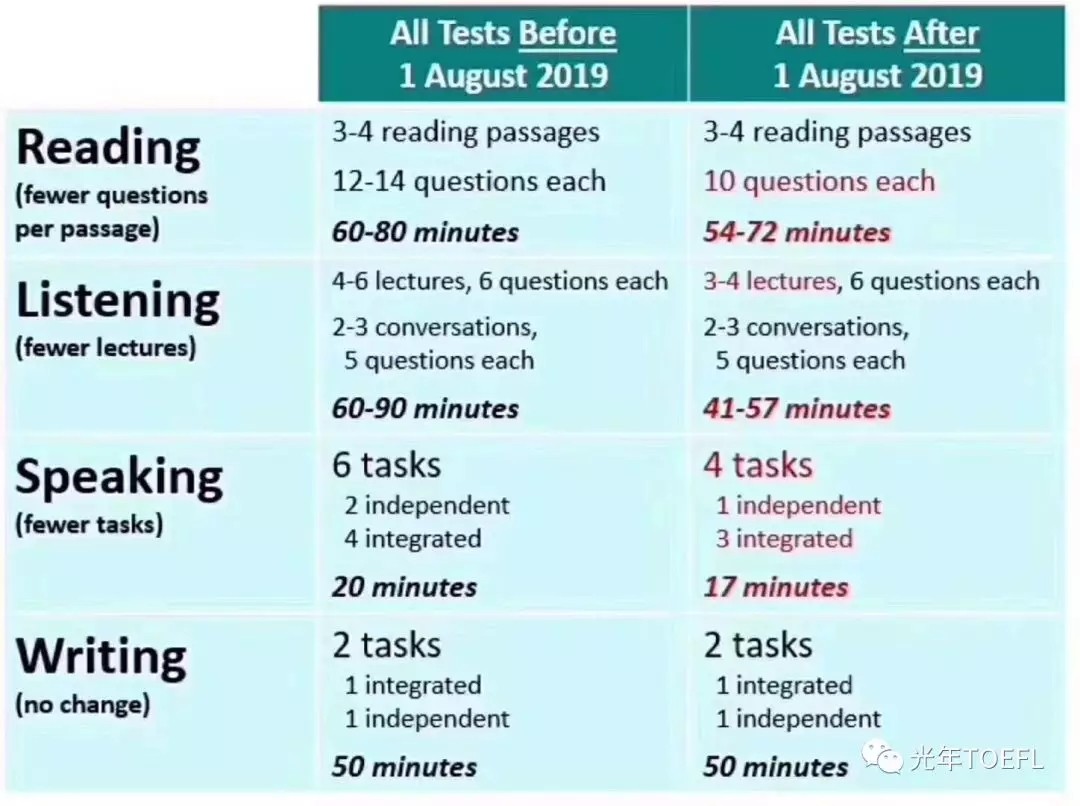托福阅读备考技巧解析 ,冲刺期应该这样备考托福阅读,今天小编给大家带来了托福阅读备考技巧解析,希望能够帮助到大家,下面小编就和大家分享,来欣赏一下吧。
托福阅读备考技巧解析 冲刺期应该这样备考托福阅读
一.结合上下文猜词
从某种意义上来讲,你积累的英语词汇量的多少,影响着你在托福考试中取得的成绩。如果说你具备的词汇量达不到最基本的要求,即使你的语言能力再强也过不了托福难关。想要训练阅读能力首先就要从词汇量上下手,只有掌握足够多的词汇后,你才具备他警告阅读能力的最低标准。
遇到生词,即使不知道什么意思,也可以根据上下文语境弄清它们之间的关系,运用逻辑推理的方法作出正确的答案。其次,还可以分析选项,进行对比,往往会发现选项中通常会出现两个意思相反的选项,此时再仔细重读原文就可以排除错误选项了。
二.考前多练习,把握各类话题阅读题材
读书破万卷,下笔如有神,放在托福阅读备考中依然适用。考生利用业余时间丰富自己的知识面,对各国或各地区等相关文化及常识有一定了解后,在参加托福考试时,当阅读到自己有所了解的东西后,解题试题时就会比较有自信和感觉,不会因为自己的不了解或是不清楚,对文章要说的东西特别盲目,答题的准确率自然而然的也就会有所上升。
对于考试技巧,“适合别人的不一定适合自己”。考生可以根据自己的实际情况去训练,尽快找到最适合自己的解锁方式。当考试遇到新话题,不要慌张,一定要合理运用有限的时间,拿捏好做题的速度,多多联系上下文,回忆相关话题,在规定时间内完成所有题目。
三.加快阅读速度
托福阅读技巧中的SQ3R法能够有效的加快阅读速度,提升考生对文章逻辑的理解。面对一篇长篇文章,一定要做到五点。Scan.扫读Question.提问Read.阅读Review.复读Recite。扫读可以让你对全文有个初步的了解。许多优秀作品的提纲都遵循一套逻辑,让读者能轻松的熟悉和了解文章的主题素材。提问可以让你知道每段的方向,和对文章内容的熟悉程度。做题的时候能够快速定位,有些时候自己提问问题还能和题目重叠,提高答题效率。阅读可以让你熟知每段主旨,了解中心思想,明白作者用意。有利于预测和推论题。
四.考前调整方式
托福考试阅读部分和听力部分之间不会停顿,你没有休息的时间,建议考生食用一顿合理丰富的早餐,做好考前的准备。另外就是在做题过程中可复查和修改答案,但由于这样很浪费时间,请尽量一次性通过。如果遇到阅读加试,托福考生将不会被告知哪一篇文章是加试文章。加试虽然不算分,但是有可能会影响考生的成绩,因此考生要认真对待加试题。做完一个部分的阅读,系统会提示考生点击“continue”进入下一部分,如果不按的话,系统大约等待1-2分钟后会自动进入下一部分。
托福阅读真题原题+题目
Naturalists and casual observers alike have been struck by the special relationship between squirrels and acorns (the seeds of oak trees). Ecologists, though, cannot observe these energetic mammals scurrying up and down oak trees and eating and burying acorns without wondering about their complex relationship with trees. Are squirrels dispersers and planters of oak forests or pesky seed predators? The answer is not simple. Squirrels may devour many acorns, but by storing and failing to recover up to 74 percent of them as they do when seeds are abundant, these arboreal rodents can also aid regeneration and dispersal of the oaks.
Their destructive powers are well documented. According to one report, squirrels destroyed tens of thousands of fallen acorns from an oak stand on the University of Indiana campus. A professor there estimated that each of the large white oaks had produced between two and eight thousand acorns, but within weeks of seed maturity, hardly an intact acorn could be found among the fallen leaves. Deer, turkey, wild pigs, and bears also feed heavily on acorns, but do not store them, and are therefore of no benefit to the trees. Flying squirrels, chipmunks, and mice are also unlikely to promote tree dispersal, as they often store seeds in tree cavities and underground burrows. Only squirrels — whose behavior of caching (hiding) acorns below the leaf litter — often promote successful germination of acorns, and perhaps blue jays, important long-distance dispersers, seem to help oaks spread and reproduce.
Among squirrels, though, there is a particularly puzzling behavior pattern. Squirrels pry off the caps of acorns, bite through the shells to get at the nutritious inner kernels, and then discard them half-eaten. The ground under towering oaks is often littered with thousands of half-eaten acorns, each one only bitten from the top. Why would any animal waste so much time and energy and risk exposure to such predators as red-tail hawks only to leave a large part of each acorn uneaten? While research is not conclusive at this point, one thing that is certain is that squirrels do hide some of the uneaten portions, and these acorn halves, many of which contain the seeds, may later germinate.
1. What does the passage mainly discuss?
(A) The ecology of oak trees
(B) Factors that determine the feeding habits of Squirrels
(C) Various species of animals that promote the dispersal of tree seeds
(D) The relationship between squirrels and oak tree
2. The word they in line 7 refers to
(A) oak forests
(B) acorns
(C) squirrels
(D) predators
3. According to the passage , what do squirrels do when large quantities of acorns are available?
(A) They do not store acorns.
(B) They eat more than 74 percent of available acorns.
(C) They do not retrieve all the acorns that they have stored.
(D) They hide acorns in tree cavities.
4. The word estimated in line 11 is closest in meaning to
(A) commented
(B) judged
(C) observed
(D) discovered
5. Why does the author mention the University of Indiana campus in line 10 -11?
(A) to provide evidence that intact acorns are hard to find under oak trees
(B) to indicate a place where squirrels can aid seed dispersal of oaks
(C) to argue in favor of additional studies concerning the destructive force of squirrels
(D) to support the claim that squirrels can do great damage to oak stands
6. It can be inferred from paragraph 3 that chipmunks do not aid in the dispersal of oak trees
because
(A) they store their acorns where they cannot germinate
(B) they consume most of their stored acorns
(C) their stored acorns are located and consumed by other species
(D) they cannot travel the long distance required for dispersal
7. According to the passage , which of the following do squirrels and blue jays have in common?
(A) They travel long distances to obtain acorns.
(B) They promote the reproduction of oak trees.
(C) They bury acorns under fallen leaves.
(D) They store large quantities of acorns.
8. The phrase pry off in line 21 is closest in meaning to
(A) swallow
(B) remove
(C) squeeze
(D) locate
9. The word littered in line 22 is closest in meaning to
(A) covered
(B) displayed
(C) fertilized
(D) planted
10. According to the passage , scientists cannot explain which of the following aspects of squirrel
behavior?
(A) Where squirrels store their acorn caches
(B) Why squirrels prefer acorns over other seeds
(C) Why squirrels eat only a portion of each acorn they retrieve
(D) Why squirrels prefer acorns from a particular species of oak trees
PASSAGE 98 DCCBD DBBAC









 扫一扫支付
扫一扫支付


